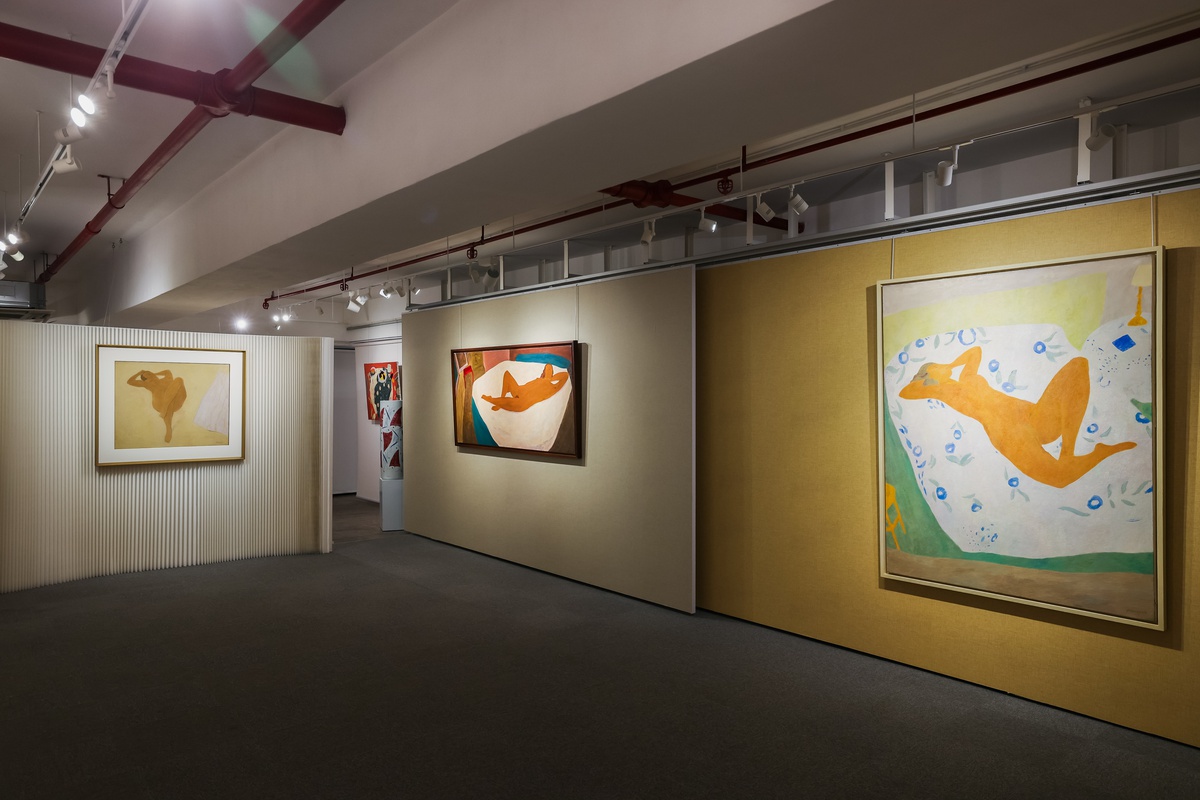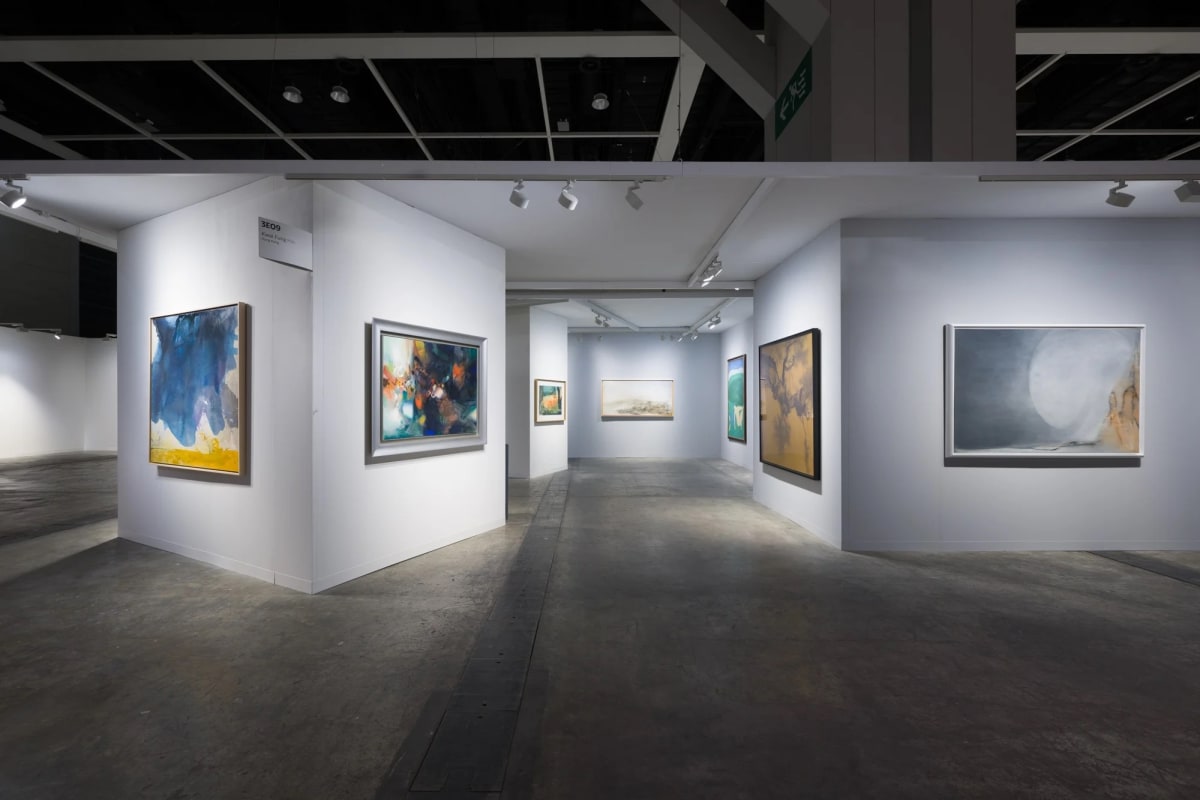Pierre Boncompain 彭貢潘 b. 1938
Born in Valence, France, in 1938, Pierre Boncompain is recognized as one of the most distinguished living modernists of the School of Paris.
He graduated first in his class, awarded Drôme Regional Council Prize, from the École Nationale Supérieure des Arts Décoratifs in 1959, and later studied at the École Nationale Supérieure des Beaux-Arts, where he won the prestigious Collioure Prize. In 1970, his work was selected for the Charles Pacquement Prize of the Friends of Musée d'Art Moderne de Paris. In 1977, the French Ministry of Foreign Affairs sent him on a cultural mission to India, where he explored exotic batik fabrics.
With a career spanning over six decades, Boncompain’s works are celebrated for their mastery of color, form, and poetic sensibility, drawing inspiration from the Post-Impressionist tradition and the luminous Mediterranean light of Provence. His works are collected by prestigious museums, including the Centre Pompidou, Musée d’Art Moderne de la Ville de Paris, Bibliothèque Nationale, Musée de Valence, and Shanghai Art Museum. Boncompain’s ongoing legacy is further celebrated through the naming of the “Esplanade Pierre Boncompain” in Montélimar, in recognition of his significant contributions and his generous donations to museums.
The Nude: Poetry in Stillness
Boncompain’s nudes seek not perfection, but peace. Rather than exalting the nude form as anatomically flawless, he is drawn to its quiet essence—a quest for universal emotion and an understanding of existence at its core. Women often appear curled in slumber or gazing dreamily, reclining on carpets or drapery in a state of deep repose—relaxed, intimately present, and seemingly adrift in their own world. Yet they invite us, as viewers, to contemplate the purity and tenderness of the human form. Soft, enveloping light dissolves sharp outlines and shadows, imbuing the scene with a solemn, timeless radiance that evokes a meditative energy. As Boncompain notes, “The fullness of being in sleep... It is the moment when, closed in on itself, the being is at its roundest.”
Drawn from the Old Testament’s Cantique des cantiques, a poetic text traditionally attributed to Solomon, Pierre Boncompain’s “Song of Songs” series translates this sacred language of intimacy into nuanced tonal harmonies and graceful forms.
In his “Bathers” series, female figures appear suspended in sunlit blue waters, suggesting a return to an original, sacred state of being. This imagery evokes the purity of an infant in its mother’s womb, calling forth questions of how we might reclaim our innate simplicity. By depicting bodies unburdened and weightless, Boncompain invites us to ask: Can we rediscover a state of innocent wonder, a clarity as pure as that of a newborn gaze?
Still Life: A Sensory Celebration of Color
For Boncompain, even the simplest objects radiate poetic depth. Arranging fruits, pottery, and textiles from his travels—such as batik fabrics and Delftware—he constructs meticulously balanced still lifes. Instead of using traditional perspective or chiaroscuro for realistic representations, Boncompain adopts post-Impressionist structural techniques by flattening light and shadow. By adopting a top-down perspective and frontal composition, he achieves spatial depth through vertical layering, placing distant forms higher and nearer ones lower. Amid this asymmetry, a serene yet subtle balance emerges, a tranquil tension within the sense of imbalance.
In vibrant fields of gold, crimson, ochre, and cobalt, each tone collides yet coexists in vivid tension. Boncompain emphasizes the fusion of colors, which he describes as “l’art des passages” (the art of transitions). Like arpeggios rippling across piano keys, these hues flow across the canvas, guiding the viewer’s gaze. What may initially appear contradicting ultimately resolves into perfect harmony.
Landscape: A Pastoral Hymn of the Mediterranean
Boncompain’s landscapes are a pictorial homage to the summer idylls of southern France. Moving between Provence and Paris, he views Provence as a kind of Eden, brimming with lush greenery and vast, clear skies—the perfect setting for quiet contemplations. Immersing himself in this terrain, he attunes himself to the subtle rhythms and breathing of all living things. Over prolonged summers, he observes the ever-shifting essence of nature—particularly the play of light—and carries these vivid impressions back to his studio, forging luminous, timeless pastorals.


